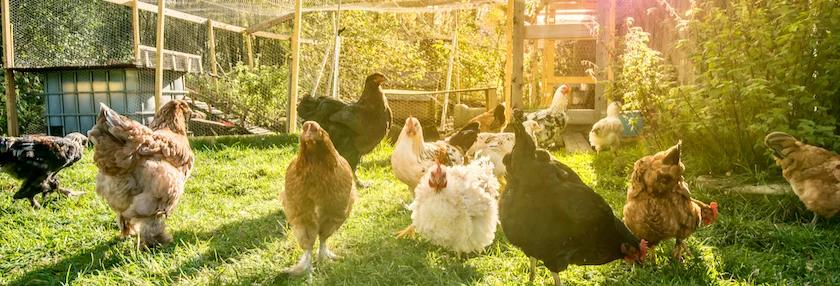Decoding Poultry Product Labels


Learn what a label’s words actually mean
Hormones, steroids, antibiotics, cage-free, organic…these and many more labels cause confusion, especially within the poultry industry. While many of these terms are regulated, some are purely for marketing to garner attention when walking down a supermarket aisle.

Know this: A conventionally-produced egg or meat product is safe and healthy to consume, no matter what labels are addressed on the package. For instance, the fresh poultry label indicates only that poultry and cuts that have never been below 26° F., the point when poultry freezes. Some labeling terms may educate while others confuse. Let’s dig deeper.
Inside, outside, or something else?
How chickens are raised is what consumers are most curious about, with free-range being new consumer craze term. There are no specific size or quality standards for this, but free-range may mean poultry are allowed outside access.
Cage-free birds are housed in an enclosed area that allow unlimited access to feed and water and provides freedom to roam within the area. New facilities are being built are this style, but many barns are finding it more difficult to modify to this model.
Healthy is, as healthy does
Since the 1950s, the USDA banned all hormones and steroids. The label cannot be used unless followed by the statement, “federal regulations strictly prohibit the use of hormones and steroids.”
Meanwhile, ‘no antibiotics ever’ means no antibiotics were administered to the hen through feed, water, or injections.
Antibiotics do have their place. Just like you would take yourself or a pet to the doctor, farmers and ranchers have a responsibility to keep their plants and animals healthy. Responsible antibiotic use allows producers to keep their birds alive when they might otherwise die.
The U.S. Food and Drug Administration regulates the usage of antibiotics, and the farmer is held accountable for closely watching the health of the birds according to what’s right for them. Also, a vast majority of antibiotics are no longer available without a prescription from their veterinarian.
If antibiotics are administered, there is a withdrawal time (for the medicine to leave the birds’ system) before the animal can go to market. Consequently, all meat is antibiotic free, so there’s really no need to pay extra for a label that is a moot point.
Naturally or unnatural?
Between “Natural” and “Naturally raised” there is a difference as one label is regulated by the USDA and one is not. Natural is defined by the USDA as containing no artificial ingredient or added color and is minimally processed.
The naturally raised label is voluntary and unregulated, indicating the bird receives no antibiotics or hormones. The bird is also vegetarian fed, meaning the farmer does not feed animal fat or by-products.
For eggs, another term that’s often used is omega-3 which means eggs are originated from a flock fed a diet enhanced with omega-3 fatty acids. The eggs are slightly higher in vitamins A and E, however the difference is quite minimal.
“Excellent source of…” or “good source of…” are also common terminology. Excellent source means there are at least 20% or more of the daily value of the nutrient while also meeting the good source requirements. A good source contains at least 10% or more of the daily value for the nutrient. It also must state that the serving is per egg and use a cholesterol disclaimer.
Organic lifestyle
One label that’s common across animal production is organic, meaning there are national standards for organic production. The Organic Materials Review Institute (OMRI) standards include items produced and handled with only OMRI-approved chemicals, and on land that hasn’t recently been treated with prohibited substances in compliance with the certified agency.
Specific to poultry, birds are only fed organic feed and receive no antibiotics. They also must have outdoor access.

Consumers drive the truck
Many companies including Nestlé and McDonald’s have promised to source 100% cage-free eggs by 2025.
The industry is slowly adapting to consumer preferences—and more companies are promising this—but are not always keeping up. The cost difference will be evident as they appear in stores.
Overall, meat and eggs are produced by poultry farmers who are caring for the birds produce a high quality and nutritious product, regardless of label.
Choosing supermarket eggs
https://newswire.caes.uga.edu/story/8923/decoding-your-eggs.html
Tags:The Farm Babe

Acreage Life is part of the Catalyst Communications Network publication family.














